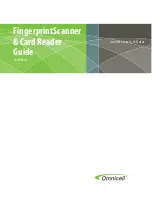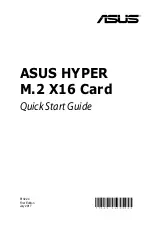
28 PCIE-5565PIORC Reflective Memory Board
2.8 Rogue Packet Removal Operation
A
rogue
packet
is
a
packet
that
does
not
belong
to
any
node
on
the
network.
Recalling
the
basic
operation
of
Reflective
Memory,
one
node
originates
a
packet
on
the
network
in
response
to
a
memory
write
from
the
host.
The
packet
is
transferred
around
the
network
to
all
nodes
until
it
returns
to
the
originating
node.
It
is
a
requirement
that
the
originating
node
remove
the
packet
from
the
network.
If,
however,
the
packet
is
erroneously
altered
as
it
passes
through
another
node,
or
if
the
originating
node
begins
to
malfunction,
then
the
originating
node
may
fail
to
recognize
the
packet
as
its
own
and
will
not
remove
it
from
the
network.
In
this
case,
the
packet
will
continue
to
traverse
the
network
as
a
“rogue
packet.”
Rogue
packets
are
extremely
rare.
A
rogue
packet
could
be
created
when
turning
a
node’s
power
on
or
off
while
connected
to
a
5595
Hub.
It
could
also
occur
when
connecting
or
disconnecting
fiber
cables.
A
rogue
packet
might
be
created
if
any
node
in
the
network
overflows
a
network
FIFO.
Their
existence
could
indicate
a
malfunctioning
board
due
to
true
component
failure,
or
due
to
operation
in
an
overly
harsh
environment.
Normally,
the
solution
is
to
isolate
and
replace
the
malfunctioning
board
and/or
improve
the
environment.
However,
some
users
prefer
to
tolerate
sporadic
rogue
packets
rather
than
halt
the
system
for
maintenance
provided
the
rogue
packets
are
removed
from
the
network.
To
provide
tolerance
for
rogue
packet
faults,
the
RFM
‐
5565
contains
circuitry
that
allows
it
to
operate
as
one
of
two
Rogue
Masters.
A
rogue
master
marks
each
packet
as
it
passes
through
from
another
node.
If
the
same
packet
returns
to
the
rogue
master
a
second
time,
the
Rogue
Master
recognizes
that
it
is
a
rogue
packet
and
removes
it
from
the
network
(after
the
rogue
packet
has
affected
every
node).
When
a
rogue
packet
is
detected,
a
rogue
packet
fault
flag
is
set
in
the
LISR.
The
assertion
of
the
rogue
packet
fault
bit
may
optionally
assert
a
PCI
interrupt
to
inform
the
host
that
the
condition
exists.
Two
rogue
masters,
Rogue
Master
0
and
Rogue
Master
1,
are
provided
to
cross
check
each
other.
Rogue
Master
0
is
enabled
by
placing
switch
S1
position
5
in
the
ON
position.
Rogue
Master
1
is
enabled
by
placing
switch
S1
position
6
in
the
ON
position.
Just
as
two
boards
in
a
network
should
not
have
the
same
node
ID,
two
boards
in
the
same
network
should
not
be
set
as
the
same
Rogue
Master.
Otherwise,
one
of
the
two
will
erroneously
remove
packets
marked
by
the
other.
















































